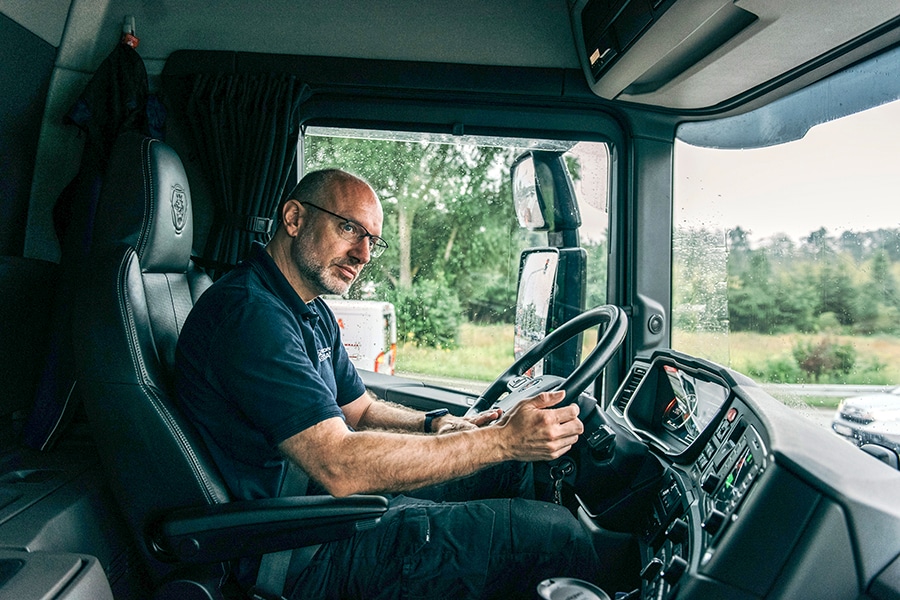
What if highways were electric? Germany is testing the idea
There's a debate over how to make the trucking industry free of emissions, and whether batteries or hydrogen fuel cells are the best way to fire up electric motors in big vehicles. Then there's the idea of electrifying highways—it checks many boxes
 Thomas Schmieder at the wheel of a test truck connected to overhead wiring along three miles of highway south of Frankfurt, Germany, on July 9, 2021. The idea is to test the system through everyday use by real trucking companies; Image: Felix Schmitt/The New York Times
Thomas Schmieder at the wheel of a test truck connected to overhead wiring along three miles of highway south of Frankfurt, Germany, on July 9, 2021. The idea is to test the system through everyday use by real trucking companies; Image: Felix Schmitt/The New York Times
OBER-RAMSTADT, Germany — On a highway south of Frankfurt recently, Thomas Schmieder maneuvered his Scania tractor-trailer and its load of house paint into the far right lane. Then he flicked a switch you won’t find on most truck dashboards.
Outside the cab a contraption started to unfold from the roof, looking like a clothes-drying rack with an upside-down sled welded to the top. As Schmieder continued driving, a video display showed the metal skids rising up and pushing gently against wires running overhead.
The cab became very quiet as the diesel engine cut out and electric motors took over. The truck was still a truck, but now it was powered like many trains or streetcars.
There’s a debate over how to make the trucking industry free of emissions, and whether batteries or hydrogen fuel cells are the best way to fire up electric motors in big vehicles. Schmieder was part of a test of a third alternative: a system that feeds electricity to trucks as they drive, using wires strung above the roadway and a pantograph mounted on the cab.
At one level the idea makes perfect sense. The system is energy efficient because it delivers power directly from the electrical grid to the motors. The technology saves weight and money because batteries tend to be heavy and expensive, and a truck using overhead wires needs only a big enough battery to get from the off-ramp to its final destination.
©2019 New York Times News Service







